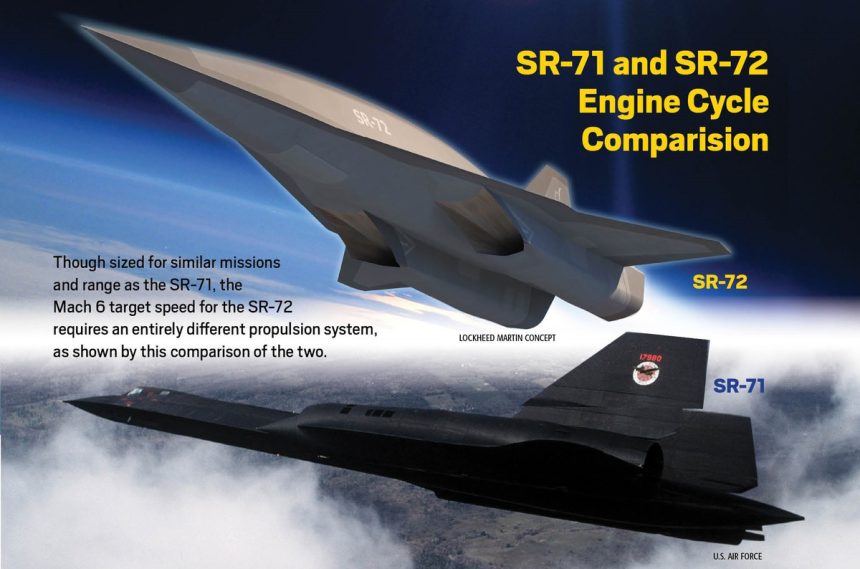The Media is Full of Speculation, But What Do We Know and What Can We Predict?
One of 2017’s biggest defense and aviation stories is the anonymous sighting by a “handful of witnesses” of the landing of a mysterious, unidentified new aircraft at U.S. Air Force Plant 42 Production Flight Test Facility in Palmdale California. What was it?
Aviation Week reporter Guy Norris scooped the story but was guarded in his reporting of sources. On September 27, 2017 Norris wrote:
“According to information provided to Aviation Week, one such technology demonstrator, believed to be an unmanned subscale aircraft, was observed flying into the U.S. Air Force’s Plant 42 at Palmdale, where Skunk Works is headquartered. The vehicle, which was noted landing in the early hours at an unspecified date in late July, was seen with two T-38 escorts. Lockheed Martin declined to comment directly on the sighting.”

Nearly every article quoting Norris’ story suggests that, what the unnamed witnesses saw is related to a new global intelligence, surveillance, reconnaissance (ISR) gathering asset. Likely a new hypersonic remotely piloted aircraft (RPA) that could be a sub-scale developmental testbed for a planned manned version. While it is a significant leap to extrapolate this sighting to a full-scale manned platform, the silence from Lockheed Martin about the incident is deafening. Had the sighting been nothing, they would have said it was nothing.
It isn’t much of a leap to suggest that any proposed, new manned aircraft, colloquially referred to in most media as the “SR-72” would have global range, fly in excess of Mach 6, be low-observable and potentially have strike capability. This is one list of requirements for an SR-71 follow-on.

When analyzing the role of a possible new strategic reconnaissance/strike asset, manned and unmanned, a few assumptions can reasonably be made. The mission of a high-speed reconnaissance (and possibly even strike) platform likely includes four unique capabilities for the strategic ISR and global strike mission:
1. It is very low observable. The relevance and quality of any intelligence collected is degraded substantially if the adversary knows it has been collected. A stealthy, ultra-high-speed intelligence gathering and strike asset could obtain signals, atmospheric and image intelligence across several spectrums potentially without detection. This improves the actionable relevance of the intelligence since the adversary does not know their operational security has been compromised.
2. It is timely. An ultra-high speed (some reports suggest Mach 6+) asset could be over the reconnaissance target area quickly and provide either real-time intelligence via secure datalink or be back on the ground quickly for retrieval and analysis of intelligence gathered over the target and stored onboard the asset.
3. It is difficult to intercept if detected. One of the primary defensive capabilities of the Mach 3+ SR-71 was its speed and altitude performance. It could outrun and out-climb most missiles and interceptor aircraft. But advances in detection, tactics, aircraft, aircraft weapons and surface to air missiles and even soon-to-be fielded focused energy beam weapons (as from the Chinese) provide a requirement for a faster, higher flying and lower observable platform.
4. It provides on-board decision-making capability in the manned configuration. While a manned asset exposes a flight crew to the risks associated with overflight it also keeps the human decision-making capability inside the mission loop. While this may not be critical in the ISR role, it may be in the strategic strike role. Once strategic strike platforms such as ICBMs and cruise missiles are committed to the attack they can be difficult to re-task or abort, especially in a dynamic tactical environment. A manned strategic strike asset with ultra-high-speed and global range retains a human in the decision loop. This is attractive both empirically and morally.
Having identified these four potential unique capabilities to a presumptive “SR-72” type asset it is appropriate to examine the possible regions and roles the asset would be employed in. Given the current and near-future strategic situation these four global missions may be part of the SR-72s tasking:
1. North Korea. The crisis has reached a near flashpoint with Pyongyang’s repeated missile and nuclear proliferation and continued adversarial rhetoric. Accurate and timely monitoring of North Korea’s actual testing activity and developmental capabilities is critical to managing the U.S. response in the crisis. This includes preventing the crisis from becoming an armed conflict. A strategic reconnaissance asset that is stealthy, fast and field-able would bolster the U.S. position in intelligence gathering, especially in this dynamic environment. A similar low observable, hypersonic strike asset would also be critical in maintaining our first strike capability should the rapidly evolving situation warrant it.
2. Iran. With potential changes in the U.S. doctrine and Iran’s nuclear policy maintaining real-time intelligence on Iran’s nuclear program is critical. The political environment surrounding Iran, and its attendant diplomatic ramifications, dictate that the best intelligence on Iran’s nuclear program and any weapons development be gathered covertly and updated in a timely manner. While orbital reconnaissance assets can provide excellent imaging across the entire spectrum from visible to infra-red to electronic emissions a reconnaissance satellite cannot collect atmospheric samples that are key to detecting nuclear testing. Also, re-tasking spy satellites not already in position with orbits over key targets makes a more dynamic, high-speed, low-observable atmospheric reconnaissance platform desirable.
3. Syria. The tenuous relationship with Russia in the Syrian conflict has been well-managed to date, but the potential for serious incidents still exists. Intelligence gathered covertly in real or near real-time about both Syrian and Russian activities in the region can help manage each participants’ agendas while lowering the risk of fratricide and other accidental conflict. It can also provide exclusive intelligence to the United States unavailable to other participating nations, providing a strategic intelligence advantage in the conflict.
4. The emerging global theater. The United States enjoys a geographic separation from the major Asian, African and Middle Eastern conflict areas. The geographic separation from conflict zones afforded by the Atlantic and Pacific oceans has been a significant reason for the U.S. ability to maintain security and prevent a large-scale conflict on U.S. soil. But this geographical distance from conflict zones also means preemptively managing conflict globally. It requires long reach and high-speed for timely intelligence gathering. A new high-speed, low-observable ISR/strike platform is required to maintain that agenda. This is a persistent requirement within the U.S. arsenal and will remain indefinitely.

Any new strategic reconnaissance and strike asset in development now could still be years from operational fielding, or it may already be in service. Recall that the F-117 Nighthawk was flying in 1981 but not officially revealed until 1988, a span of seven years during which the program remained hidden. While media has changed since the 1980s and it is more difficult to keep a program secret today, the possibility still exists that the program is much farther advanced than publicly revealed.

As early as 1985 a line item appeared in the U.S. defense budget for $85 million USD attributed to a project called “Aurora”. By 1987 that allocation had bloated to over $2.3 billion for the same project. Some reports suggest the U.S. Air Force was working on an SR-71 replacement as early as 1988.
Subsequent reports in credible media like Jane’s Defense and Aviation Week & Space Technology have featured accounts of hearing and seeing unidentified aircraft in the region of the Nellis test ranges.
Another famous sighting happened over the North Sea in November 1991. Scottish petroleum engineer Chris Gibson, who was also serving in the British Royal Observer Corps according to reports, was working on the offshore oil rig Galveston Key. Gibson, an experienced and trained professional aircraft spotter, saw “The shape of a pure isosceles triangle” flying behind a KC-135 Stratotanker refueling aircraft in formation with two F-111s. The aircraft were sighted in the 6A air-to-air refueling zone according to reports. Gibson’s accounting was substantiated by another witness, lasted a significant amount of time, and has been repeatedly analyzed, but never explained.

Trying to organize the sightings and information we have of any possible new hypersonic low-observable reconnaissance/strike aircraft with the mission requirements and global strategic need for aerial intelligence still leaves massive gaps between what we know and what is possible according to accounts, but within this massive gap of the unknown exists plenty of room for a real project that, when we eventually do hear about it, will undoubtedly be one of the most sensational defense and aviation stories of this century.
Top image: Conceptual image of SR-72 with SR-71. Courtesy of Aviation Week & Space Technology









